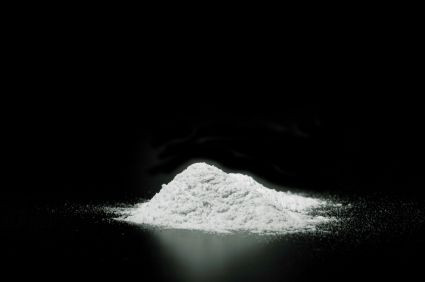Drugs Are My Anti-Drug: Cocaine Addiction Could Be Cured By Promising New Antidote

It's a simple question that has baffled neuroscientists and physicians for years: Why are brains susceptible to cocaine addiction?
Researchers at the Johns Hopkins University (JHU) School of Medicine have tracked down a possible explanation, along with an antidrug that stops the addiction process. Their findings were published today in Neuron.
Currently, there is no medication that can curb cocaine addiction, which afflicts nearly 825,000 of the 1.4 million users in the U.S.
A so-called "cocaine vaccine" is performing well in animal models and can keep a large fraction of the addictive substance from entering the brain. However, this remedy doesn't actually reverse stymie cravings, and some worry that serious abusers will simply take more of the drug to get their fix. Drugs used to fight alcohol addiction or seizure are showing promise in early human studies trials, but these repurposed drugs alter brain chemistry in a general manner and may not strike at the heart of cocaine addiction.
While the underpinnings of cocaine addiction remain elusive, this addictive substance is known to stir the mind's pleasure centers by increasing the abundance of dopamine and serotonin. These brain chemicals send signals between nerve cells, but having too much for too long can alter how certain genes operate in brain cells.
This is believed to spawn pleasure-seeking behavior and addiction. But the steps that lead from excess dopamine/serotonin to long-lasting changes in nerve cells remain a mystery.
A hunch drove Dr. Solomon Snyder, M.D., a neuroscientist at JHU, to find a possible answer. Snyder was studying a relatively new drug called omigapil that promotes the survival of nerve cells, when a proverbial light bulb turned on inside his head.
He realized that cocaine overdose can cause the rapid death of brain cells, but nobody had tested if omigapil could prevent this process. Not only could omigapil prevent cocaine toxicity, its cellular target - a brain protein called GAPDH - is intimately involved in the development of addiction with regular doses of cocaine.
"It was remarkably serendipitous that when we learned which brain pathway cocaine acts on, we already knew of a compound, CGP3466B [omigapil], that blocks that specific pathway," said Snyder who won a Lasker Award in 1978 for his work with opiates. "Not only did CGP3466B [Omigapil] help confirm the details of cocaine's action, but it also may become the first drug approved to treat cocaine addiction."
GAPDH is normally involved in sugar metabolism, but can sometimes travel into the cell nucleus where it turns genes on and off. Omigapil prevents this from happening.
Snyder and his team found that low doses of cocaine in mice caused GAPDH to stimulate nerve cells and activate genes involved in addiction. High doses of cocaine, in contrast, made GAPDH turn on the cell's self-destructive pathways.
Treating mice with omigapil prevented the negative consequences of both high and low doses of cocaine, and had the additional benefit of stopping cravings for cocaine.
Novartis originally developed Omigapil in 1998 for Parkinson's and Lou Gehrig's disease, and the drug has already been proven safe for humans.
"What's exciting is that this drug works at very low doses, and it also appears only to affect this specific pathway, making it unlikely to have unwanted side effects," said first author Risheng Xu, an M.D./Ph.D. student at JHU. "We also know from Novartis' early-stage clinical trials that the drug exhibits few documented side effects in people."
Santhera Pharmaceuticals is current owner of omigapil, and Synder has brokered a deal with them and the National Institute on Drug Abuse to begin testing on animal models and in subsequent clinical trials for cocaine addiction.
Published by Medicaldaily.com



























